How To Turn A Student Dorm Into A Smart Home
Make Your Dorm Room Smarter With These Easy Upgrades
- Last Updated Aug 7, 2020

So, you have moved into your dorm room or student house, and you’ve gotten yourself unpacked – and now you’re faced with the grim reality that your dorm room is nowhere near as smart as it could be.
But think of the possibilities. Your lights set to turn on at night just as you walk in the door, your morning coffee already brewing the instant you wake up, turned on alongside the alarm clock. You can monitor your room when you are at work, easily keep a hold of your bills and generally just be more together and impressive when it comes to your dorm room setup.
It might seem like an unattainable dream: to have a smart home setup in your dorm, but realistically with a little bit of know-how and investment, it’s very easy to set yourself up with a smart dorm that will be the envy of all your friends.
Your Voice Assistant
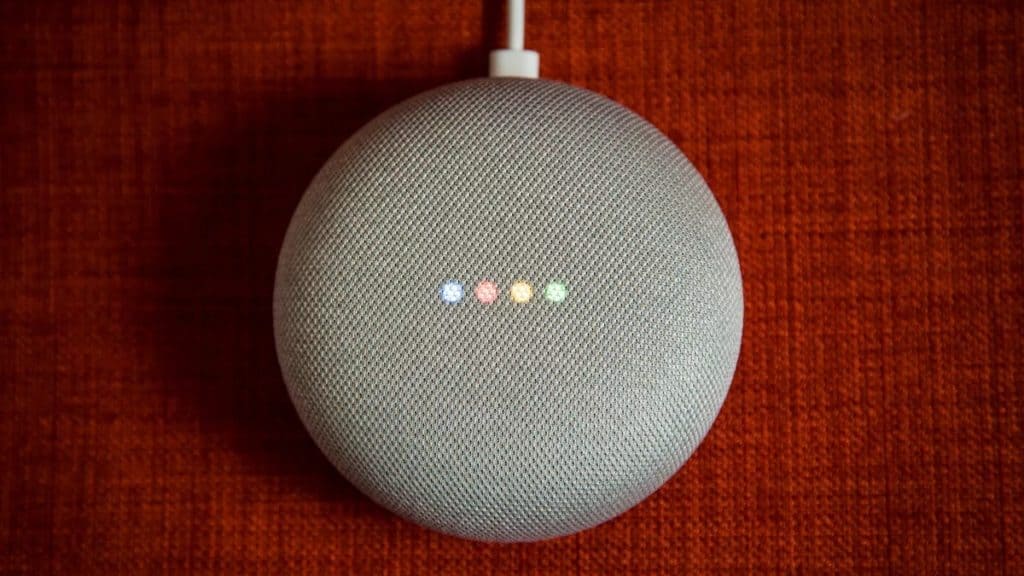
When it comes to setting up a smart home a huge factor in making it as wireless and impressive as possible is making sure that you have the capability to activate your different devices via nothing more than a voice command rather than having to fiddle with switches and actually physically moving. The horror.
So, you have to choose yourself a voice assistant that will be able to control the devices in your home from your verbal commands. Luckily, you are going to have a few to choose from, with Amazon’s Echo Dot or the Google Home Mini probably making up your best bets when it comes to your final choices?
Why these two? Well, being blunt, if you are looking to turn a dorm room into a smart home, then you are probably a student. I know from first-hand experience that students don’t have that much money – and these are the cheapest options. There you have it – the two least expensive voice assistants on the market today.
Which do you need though? Well, let’s run through the benefits of each.
Both of these voice assistants come priced at around $50 – so there is no real difference to help us choose, so a big question we can ask is what can each of these devices do for you?
Well, as you might expect, the Google home mini is capable of communicating with the Google Assistant, so that any questions, songs or other internet-based questions you might have are answered easily enough with all of the help that Google can offer you.
You can also expect a lot more than an imaginary friend to talk to – the Google Home Mini is also capable of making free voice calls to your friends, so you are always going to be in contact with your friends if you need them – and you will be able to choose which friends you want to call by syncing your Google Home Mini to your Google account – which will also give you the ability to amend and hear your calendar on the fly, which is pretty hand if you want reminders on your deadlines on demand.
Realistically though, one of the biggest draws towards the Google Home Mini is that it connects and plays so well with other devices. You can enable the Google Home Mini to connect with a range of devices around your dorm, so that you can have it play Netflix on your television, music through your Bluetooth speakers or even work alongside your smart appliances.
It’s really easy to connect your Google Home Mini to these devices, which in conjunction with the Google Home Mini’s connection to the Google Home app and the other devices which can work off of Google’s smart applications makes a very powerful case for this to be the voice assistant you choose.
The Echo Dot is a different voice assistant that works much in the same way – but has some critically different features.
It can still play well with network-attached applications and devices like speakers, but without the functionality and ease of use that comes along with Google’s home-based applications. But, in a trade-off for your Google account, you can sign into the Echo Dot with your Amazon account, which means that you will be able to cast Amazon Prime Video at a moments notice, and have your audible account connected (and Amazon Music too).
Basically, with an Amazon Echo Dot, you are going to be able to do everything you can do with a Google Home Mini, with the key difference being that you are signed in to your Amazon account rather than your Google account – which also allows you to order things from Amazon.com directly, just by asking your voice assistant.
I’m going to go out on a limb here and say that as a student there won’t be all that much Amazon.com ordering happening, especially if you want to keep your costs down. So, with that in mind, we are going to recommend the Google Home Mini as the go-to voice assistant for your dorm room.
It’s easy to manage on your phone, easy to connect to different devices in your dorm, and above all, it’s a very helpful deskmate to have available as you study – calendar notifications and free voice calls being two of the biggest positives here that the Echo Dot doesn’t have.
One negative that is shared by both voice assistants though is the speakers on the device itself. They can be pretty weak, and not capable of giving out the noise capable of aiding study (or background soundtrack to hanging out) that might be more capable with a set of good, Bluetooth capable speakers – more on them later.
Your Internet Router
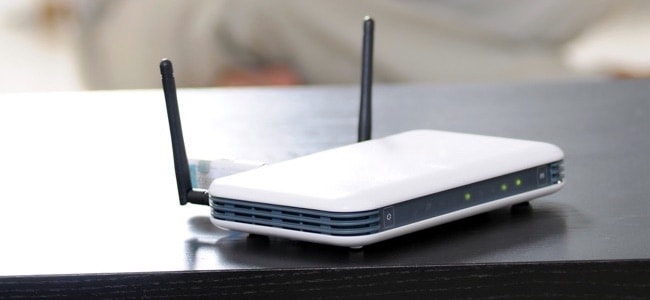
One of the majorly annoying things about living in a dorm at College is that your internet access is provided by the dorm itself – which can restrict its usability. Luckily though, plenty of dorms out there provide a decent way to hook your own router up to the campus internet, which can in turn allow you to have your own, de-facto private network.
What is important to remember here is that an internet router isn’t going to automatically increase the speed or performance of your provided internet (though better routers can allow for better speeds). Instead, you are just going to be giving yourself a way to connect all of your devices privately to the same network, enabling a much easier smart system to manage all of your devices on.
There are hundreds of different options when it comes to choosing a decent router for your dorm room – but check out some of the different models on offer from Netgear right now. They are competitively priced, offer high bandwidth, and have lots of different connectivity options so you are never going to be stuck short of a LAN input when it comes to your devices.
If you dropped $135 (ish) on the Netgear Nighthawk Smart WiFi router, for example, you can expect speeds up to 1900mbps, two USB ports, and four ethernet inputs. That’s exactly what you need when you are looking to build yourself up a home network that is capable of supporting smart home functionality.
And, if you are reading this thinking that you can get away with connecting to campus provided WiFi, remember that any smart device you connect to a network will be visible to others using that network – and you might not want drunk idiots to have a connection to your in dorm lighting.
Your Lighting
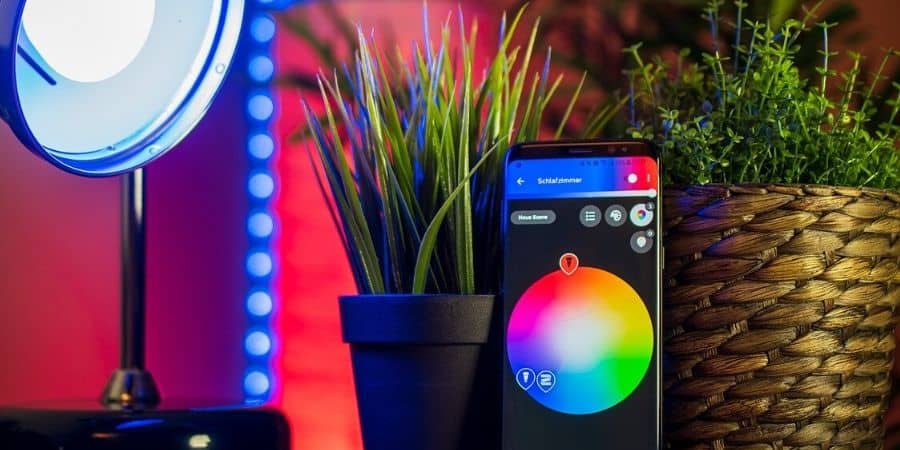
When it comes to lighting up your dorm room, you are going to be a little bit spoiled for choice when it comes to the best smart lighting options.
The first thing you have to decide is how exactly you want to power your smart lights – whether that is through an actual smart bulb, or via the use of a smart plug. The difference here is pretty minimal – but the real crux of the issue is whether or not you want your lights controlled directly via your phone, or just turned on and off via Smart functionality on the plug socket.
So, what are the advantages of a Smart lightbulb? Well, they are marginally more expensive than a regular light bulb, so they don’t have budget-friendliness on their list of positives – but they are long-lasting, and there are certain options that don’t just allow for normal lighting options, but for a multitude of color options as well due to being a LED light rather than a traditional GLS bulb.
Basically, if you are wanting to outfit your dorm room with lighting that can set the mood, match a look you have in your head or even just change the overall ambiance, then a smart light bulb will be the way to go, as you will be totally capable of programming in lighting levels, colors and even wake up times for when you when the bulbs to switch on. Plus, you can connect many bulbs to your Google Home (or Alexa, if you chose that), so you will have total voice control over them.
All in all, they are a good option for if you want total control and customization in your lighting within your dorm, but all this does come at an expense. A pretty costly one too. So let’s talk about the other option…
Smart Plugs
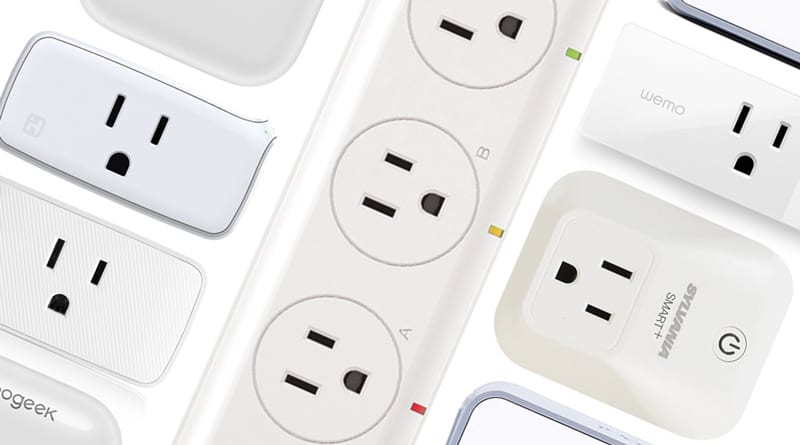
Smart plugs are the techy answer to all of your appliances that haven’t got smart functionality or timers included on them.
Now, I’m sure that there are plenty of high tech coffee makers out there that can for sure connect to your Google Home, and get making that fresh press as soon as you utter a voice command, but I’m also willing to bet that these kinds of coffee machines are hideously expensive, and that might not mesh too well with a students budget.
Enter a smart plug.
A smart plug is literally what it says on the box, an extension to any outlet that can transform any electrical appliance into a voice-assisted or ‘smart’ home ready device. Pretty cool stuff. Of course, the functionality is limited to simply turning on or off whatever is connected to the smart plug, but that isn’t too big a deal.
Put it this way. The night before you go to sleep, you set your coffee machine up as if you were going to make yourself a brew – you then turn off your smart plug, and either program it to turn itself on in the morning, or control it when you wake up via your voice assistant or smartphone so that as soon as you need it, your coffee is already boiled and ready to go.
Change the device working on a smart plug to a pressure (or slow) cooker. Chuck your ingredients in before you head out for the day, and turn it on when you are out in classes or in work for the day, and your dinner is going to be right there ready for you when you get back to the dorm itself. Crazy easy time-saver.
You can expand this logic to other devices as well. You can have lights working on smart plugs so that with the careful co-ordination of voice apps (and possibly extension cords) you can have a smart lighting setup without you having to reach deep in the pocket for smart bulb money. Sure, you might not have the different colored LED options that come with a smart bulb 0 but you will still be able to configure a study mode, low light mode – the list goes on.
Now, let’s argue that your dorm doesn’t come with utilities included. It’s a bum deal, but some places have that setup. A smart plug is your best friend in these situations. As long as you have yourself an energy app that totals up your usage live, you can identify the appliances and electrical items that are causing the most energy consumption.
Basically, even if you are out in classes or with friends, you are able to check whichever device you have your smart dorm connected to and turn off whatever devices you need to so that you can keep your monthly costs down. It helps the environment as well, but I feel like the crux of my points here lies in the fact that smart plugs are super convenient, voice-controlled, and help you save on costs.
Your Speakers

Its College, you are going to need yourself some decent music – and if you are looking to build yourself a decent smart dorm room then you are going to need yourself a set of speakers to match.
Realistically though, you don’t have to break the bank in order to have smart home ready audio. In fact, thanks to the fact that both of the voice assistants I listed before have Bluetooth connectivity built right into them – meaning that as long as you have Bluetooth ready speakers, you are pretty much there when it comes to smart home speakers in your dorm.
If you are looking for recommendations though, I would say that Bose is a reliable and quality brand when it comes to audio. Check out their Soundlink Mini for a smaller desktop speaker that’s capable of putting out great quality audio whilst not being big and brash enough to wake the neighbors and pull in complaints.
If you wanted something a little more traditional in the way of speakers (perhaps ones that can also connect to your TV or computer easily then Edifier have a whole host of options on Amazon that fit in with the traditional look of speakers – that are also easily connected with TVs and computers.
Basically, you are going to find it very easy to connect your music to a speaker and have it play in your dorm via voice activation as long as you are working in conjunction with a voice assistant. There are speakers out there that come with Alexa or Google Assistant integration – but they are crazy expensive, so who needs them.
Your TV
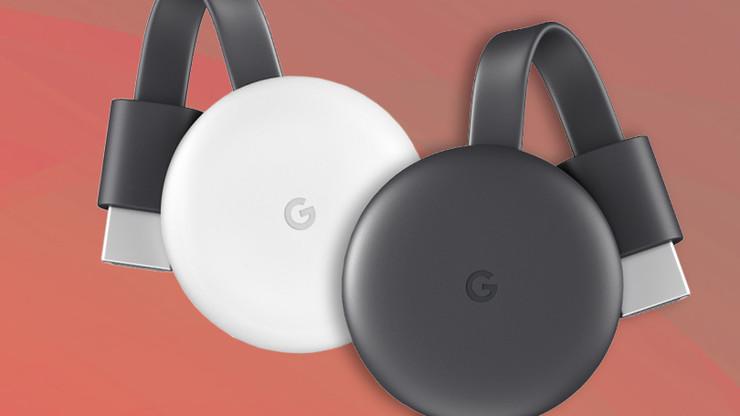
Now, when it comes to television you might have different priorities depending on what you enjoy getting from visual media. Which is a very nerdy way of saying ‘if you like games, or have a computer.’
So, lets first argue that you don’t have a PC and are perfectly happy doing all of your coursework working on a laptop, then, of course, you are going to want a TV to watch all of your different shows and whatever on. Now, there is the option of connecting a laptop to your TV so that you can just watch whatever you want via an HDMI cable, but that isn’t very ‘smart home’ now is it?
What I would recommend is getting yourself something like a Google Chrome Cast that you can stick into your televisions HDMI socket, and in turn connect to your router. From here you are going to be able to cast whatever media you like to your TV from apps like Netflix, YouTube, Amazon Prime, and Hulu – all without leaving your bed thanks to your wireless network.
We could even take it one step further than this, and say that your TV could be connected to a smart plug, so that if you wanted to you can turn on your television and start casting media to it all from your phone without ever standing up. The dream.
But, there is always the possibility that you do in fact enjoy your video games, and that maybe you have a PC or laptop you are bringing to your dorm so that you can enjoy these games on campus. If you have been paying attention to the article so far, I have already recommended getting some speakers that can play via Bluetooth as well as through a traditional 3.5mm jack input, so my suggestion to those out there looking to play games in their dorm would be to buy themselves a decent monitor.
Nowadays, PC monitors are just about as expensive as televisions, and realistically they are better for the likes of gaming than any TV is. Check out our list of the best monitors available here – but consider this as well. With the use of an HDMI splitter, you could have your computer, a Chrome Cast, a console or even your laptop all hooked up to the same monitor, and you can switch between them at your leisure so that you can enjoy whatever game, movie or coursework you have to do at that moment.
Paired up with a decent set of speakers, this is a great space-saving alternative to a television that often serves the same purpose – and in smaller dorm facilities saving space can often be the high priority thing to do.
You can even still have the monitor (and your other devices) connected to a smart plug, so once again all you have to do to turn on your monitor and work your Chrome Cast (or console) through your phone (or controller). And don’t worry about the splitter – there are voice-activated versions that work with remote controls as well.
Your Security
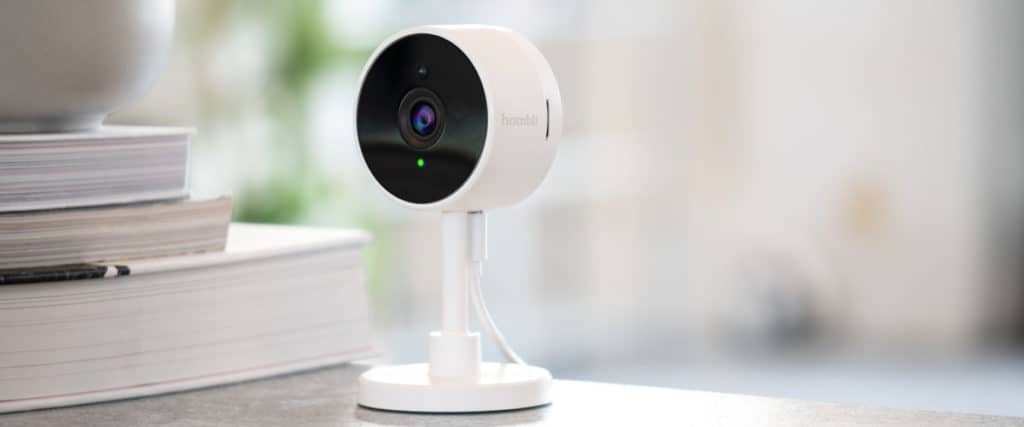
One feature you can integrate into your smart dorm that isn’t based on its ability to impress anyone who might walk in is security. You could argue its actually for the exact opposite.
There are a whole bunch of different security devices that you can integrate into your home network that respond and react via whatever chosen device you would like alerts on. So, if you are harboring a suspicion that someone has been coming into your dorm and raiding your food supplies, taking clothes (or even more) you can select from a whole host of different smart security options to keep your things safe.
If you are just looking for an alert whenever your dorm is possibly trying to be broken into, then there are different smart sensors out there that can send an alert to your phone when it doesn’t detect you entering. These are all well and good, and possibly best suited if your dorm room is part of a larger complex where you trust your neighbors and have an RA or campus security on speed dial so that they can respond to possible incursions quickly.
If you want to step up your smart dorm surveillance though, there is no reason to stop at sensors. You can look into the different array of security cameras out there. Now, it might not be feasible for you to invest in a couple hundred dollars’ worth of surveillance equipment, but you might be surprised to learn that mini security cameras can run as cheap as $40 – not bad at all if you have security on your mind. Plus, these cheaper security cameras sit quite happily on a desk, and if they were pointed towards the interior of your room they can provide an up to date and accurate view of your dorm even when you aren’t there. Use these in conjunction with security sensors, and you won’t ever have to worry about your dorm when you are out and about ever again.
